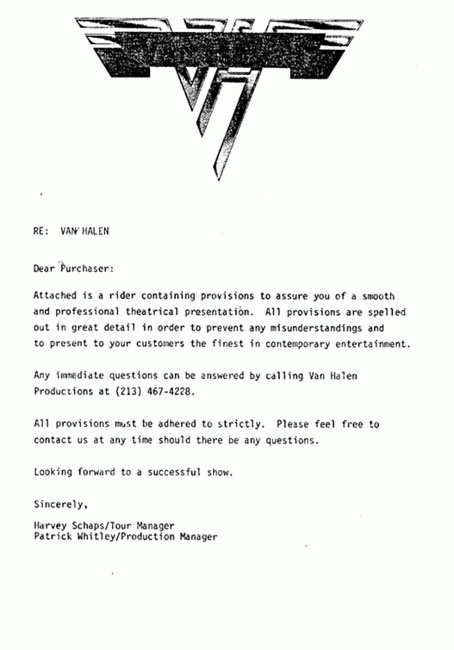What do brown M&Ms have in common with standard work?
Learn why healthcare providers, lawyers, bankers, manufacturers, and lots of other professionals incorporate checklists into their standard work.
- Checklists catch our inevitable mental flaws of memory, attention, and thoroughness.
- Deviations and mistakes happen when people feel too comfortable and start to take shortcuts.
- Professionals across industries find that using checklists leads to greater productivity, consistent results, and continuous process improvements.
- Using checklists as part of training will encourage employees to trust their procedures more than their instincts.

You’ve probably heard the urban legend from the 80s, about a rock star that demanded that every concert venue provide a bowl of M&Ms with all the brown ones removed. The story goes that a particular venue provided M&Ms but didn’t remove the brown ones. The rock star went berserk and then proceeded to do $80k worth of damage to the concert hall.
The story is actually true!1 But the details aren’t quite what you expect. There were brown M&Ms and that did result in $80k worth of damage, but it wasn’t the rock star’s fault. It was the venue’s failure to follow a checklist.
In 1982, Van Halen was touring the U.S., bringing with them a massive amount of sound equipment, lighting and other gear. Some of the venues they played were smaller and weren’t prepared to deal with the size and scale of Van Halen’s huge production.

Because of this, the band had a massive contract rider. It spelled out, in a series of checklists, all of the band’s requirements. It dictated the minimum size the doors could be, the amperage and voltage of electrical receptacles, and yes, buried in the middle, it stipulated that a large bowl of M&Ms be provided with all the brown ones removed. If there were brown M&Ms, the band had the right to forfeit the show with full compensation.
The reason to put so much emphasis on the M&Ms was genius. When David Lee Roth went backstage upon arriving at a venue, he would immediately check the M&Ms. If he found brown ones, he knew that the promoter had taken his contract rider too casually and they would need to double-check the entire list.
In Pueblo Colorado, the venue provided brown M&Ms, they also weren’t really sure about the amount of weight their floor could support. Before all the details could be reassessed, it was too late. The stage sunk through the floor, causing $80k worth of damage.
Van Halen, like many other organizations, found a simple solution to managing massive complexity – a checklist.
Checklists? Really?!
The Van Halen example is just one of many unexpected applications of checklists in real life scenarios from Atul Gawande’s book The Checklist Manifesto.2 Gawande identifies how doctors, lawyers, engineers, architects, aviators and financial advisors all incorporate checklists into their work. With Acadia, we’ve seen tremendous success leveraging checklists among our manufacturing, continuing care nursing facility, commercial bank, and retail customers. Professionals in each of these fields found that by applying checklists, they could be more productive, deliver consistent results, and continuously improve their processes.
There are two reasons we, as imperfect humans, screw things up. Either we don’t know the one best way to do something, or we fail to apply the one best way.
While practice and training can make us better at our work, the complexity of some tasks can still cause us to fail. How we feel on any given day, distractions in our lives and in the workplace also play a part in whether we perform at our best.
Gawande says, the checklist provides a “cognitive net” that catches our mental flaws of memory, attention and thoroughness.
You may do something hundreds of times, and think you know it backward and forward. But that may actually be what makes things start to slip. When people feel too comfortable with a task, they start to take shortcuts. When that happens, quality and productivity are the first to suffer.
Creating a good checklist
Checklists help with memory recall. They clearly identify the minimum steps necessary to complete the task. When developing a procedural checklist, keep it clear and concise, eliminating any ambiguity.
Finding the right balance between simplicity and effectiveness can be a challenge. Provide too little information and it won’t help. Provide too much and it won’t be used.
So, a good rule of thumb is to keep your checklist length to 5-9 items. This is the number of items a person can effectively manage in their working memory. Longer than that and people may try to take shortcuts.2
For more complicated procedures, you can join smaller checklists together into group checklists.
The most important step is to test your checklist in the real world and make changes based on what your employees are communicating back to you. Study the results your procedure generates – did it perform as expected? Make adjustments until the checklist works consistently.
Checklist for creating a good checklist2,3:
- Record what you do, not what you think you should do.
- Make sure that each step is necessary before you include it.
- Each step should be clear and concise.
- Each step should correspond to a concrete action.
- Test your checklist to make sure it works in the real world.
Resistance to checklists2
Getting people to use checklists is tricky. Some employees may be offended by the suggestion that they need a checklist. People resent strict protocol because of its apparent rigidity. They don’t like to envision themselves as mindless robots.
In reality, the opposite is true. The checklist gets the mindless, routine tasks under control. It allows your employees to focus brain power on making improvements to process. Remind your employees that checklists are not complex how-to guides. They are quick and simple tools that support professionals doing their work.
When introducing checklists, emphasize that the checklist is also a tool for them to send information back to management. Give them control of improving processes and identifying unknown problems. This will help give employees a sense of ownership.
Further enforce this by allowing employees to help create the checklists and test them before they become standard practice. Things are different when you’re writing lists versus using them, so this testing stage is key.
Another best practice is to use the same checklists in training as on the job. Introducing them from the beginning will help new employees trust their procedures more than their instincts.
In Acadia, an established procedure can be instantly converted into an actionable task list. On each item of the checklist, there is an opportunity for employees to provide feedback on roadblocks that stopped them from performing the task as prescribed.
To help with those existing employees who are still resistant to change. It is important to identify and socialize successes – time saved, risks averted, identification of better processes, etc.
Real-world examples
Over the last several years, we have collected feedback from our customers on how introducing procedure task lists has helped make them more productive. Here are just a few examples:
- One of the world’s largest brewing companies – brewery managers use task lists after switching production from one beverage to another. This ensures quality and eliminates waste by making sure the changeover process was managed correctly before full production ramped up again.
- Super-regional bank with 1,400 branches – branch management procedures such as opening / closing procedures ensure things like arming the alarm and locking the vault and front door aren’t forgotten.
- Medicinal cannabis cultivator – cultivators in Maryland must follow regulations precisely and provide an auditable document trail. With Acadia task lists, every step taken by every employee is recorded as it is completed.
- State health department – when onboarding new employees, the department uses a manual with procedures that get converted to task lists with due dates for each new employee. Employees themselves get a task list to complete and the onboarding manager gets one as well.
Does your company use checklists to help ensure proper adherence to standard procedures? We’d love to hear about it. Contact us here.
Sources:
Ready to crush your goals?
"*" indicates required fields


